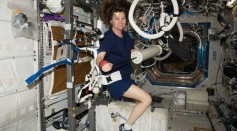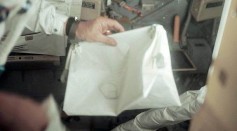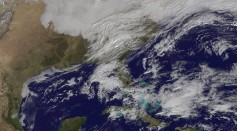science
Leave it to the Limpets—Researchers Find New Strongest Natural Material On Earth

When It Comes to Pandemics and Outbreaks, Could Climate Change Be to Blame?

When It Comes to Pandemics and Outbreaks, Could Climate Change Be to Blame?
Ash, Auroras or Clouds—What Could this Strange Martian Plume Be?

VIDEO—How Antiquated Technology May Reveal the Secrets of Titan’s Seas

Valentine’s Day In Space—A Promise to Better Heart Health
ESA Mars Express Orbiter Reveals Place for Caffè on Mars’ Southern Icecap

Can You Fathom the Trash? New Study Reveals Eight Million Tons of Plastic Trash Reach the Oceans Each Year
A Race Against the Clock—Volunteers in New Zealand Try to Save Stranded Pilot Whale Pod
Fluid Mechanics Finally Reveal ‘How Many Licks to Get to the Center of a Tootsie Pop’

Stellar Duo Fated to Meet a Supernova End—Twin Stars Discovered in Henize 2-428

Neil Armstrong's Apollo 11 Artifacts Stowed Away For More Than 40 Years

NASA & NOAA Satellites Reveal Stunning View of Record-Breaking New England Winter Storm
Seventeen Years of Waiting Meets More Delays—Weather Pushes SpaceX Dscovr Launch to Tuesday
Most Popular

AI Revolution in Medical Education: Transforming How Healthcare Professionals Learn

China’s Tiangong Space Station to Expand Its Capabilities With New Modules

Exploring Life Beyond Earth: Study Claims Other Planets Could Be Suitable for Alien Life

Out of Office, Not Out of Mind: Planning for Employee Holiday Absences





